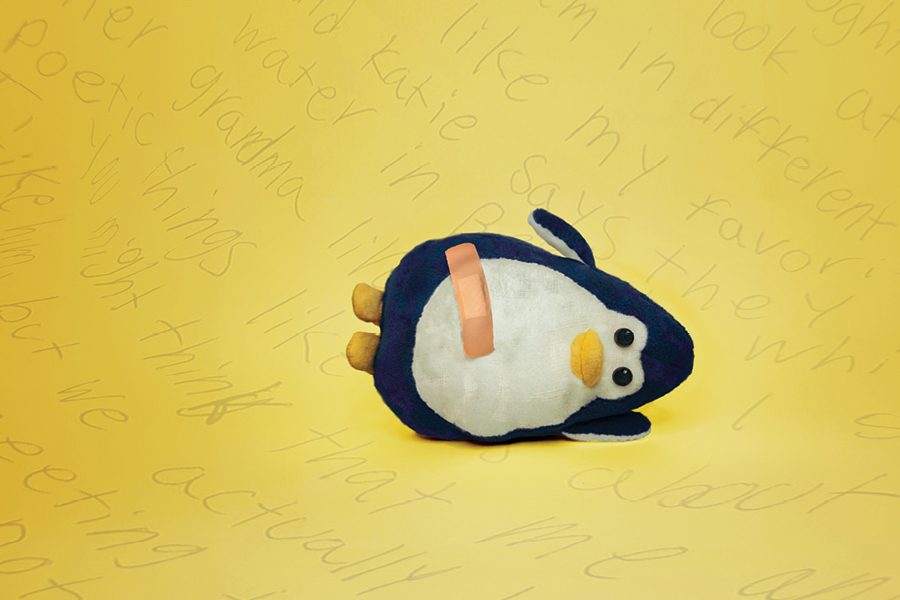“It came out in a torrent,” Emily Kaczmarek said of the 2018 first draft of her play Soft Target. “Sometimes plays feel like that to me—sort of like a primal scream I just had to get out.”
Early in 2018, the U.S. was rocked by the high school massacre in Parkland, Florida, during what would become, at the time, the worst year for school shootings in the country. An educator herself, Kaczmarek recalled struggling to stomach the news, haunted by what the shooting’s survivors were going through. She knew she needed to write about it but was wary of creating something that came across as preachy or as fodder for an after-school special.
Instead she created Soft Target, now set for its world premiere at Detroit Public Theatre (April 30-June 8). In the play, Kaczmarek explores the impact of gun violence on childhood from the perspective of Amanda, a 9-year-old girl, and her toys and possessions: a stuffed penguin, an American Girl doll, a diary, and more. Kaczmarek said she was inspired by a profile of a young school shooting survivor, amazed at how a smart, imaginative child processed such horror.
Hoping to depict such a child and to “give her power in the context of the story—in the real world, children are so at the mercy of adults,” Kaczmarek said she wondered, “How can I center a kid, and who else can be in the story so that we kind of invert the power dynamic?”
That’s how she came up with the idea of including Amanda’s toys, whose entire existence is dedicated to one little girl, and hence can tell when there’s something different about her: She’s angry, she’s violent, and they don’t know why.
“I think the conceit of using toys also allowed space for humor,” Kaczmarek said, “for a world that can draw people in and then, as needed, gut punch them.”
Jerald Raymond Pierce is the managing editor for American Theatre.
Support American Theatre: a just and thriving theatre ecology begins with information for all. Please join us in this mission by joining TCG, which entitles you to copies of our quarterly print magazine and helps support a long legacy of quality nonprofit arts journalism.
Related

American Theatre Wing Announces 2018 Jonathan Larson Grant Recipients
The recipients are Jay Adana, Andrew R. Butler and Andrew Farmer, Emily Kaczmarek and Zoe Sarnak, and Mark Sonnenblick.
In "Awards"

Jane Kaczmarek Revisits ‘Our Town,’ Her Favorite Play
This month the 'Malcolm' mom will play the Stage Manager in a production with Pasadena Playhouse and Deaf West.
In "Interviews"

TCG Announces First Round of Edgerton New Play Awards
The awards will allow 28 productions more time for rehearsal and development with the entire creative team.
In "Awards"





